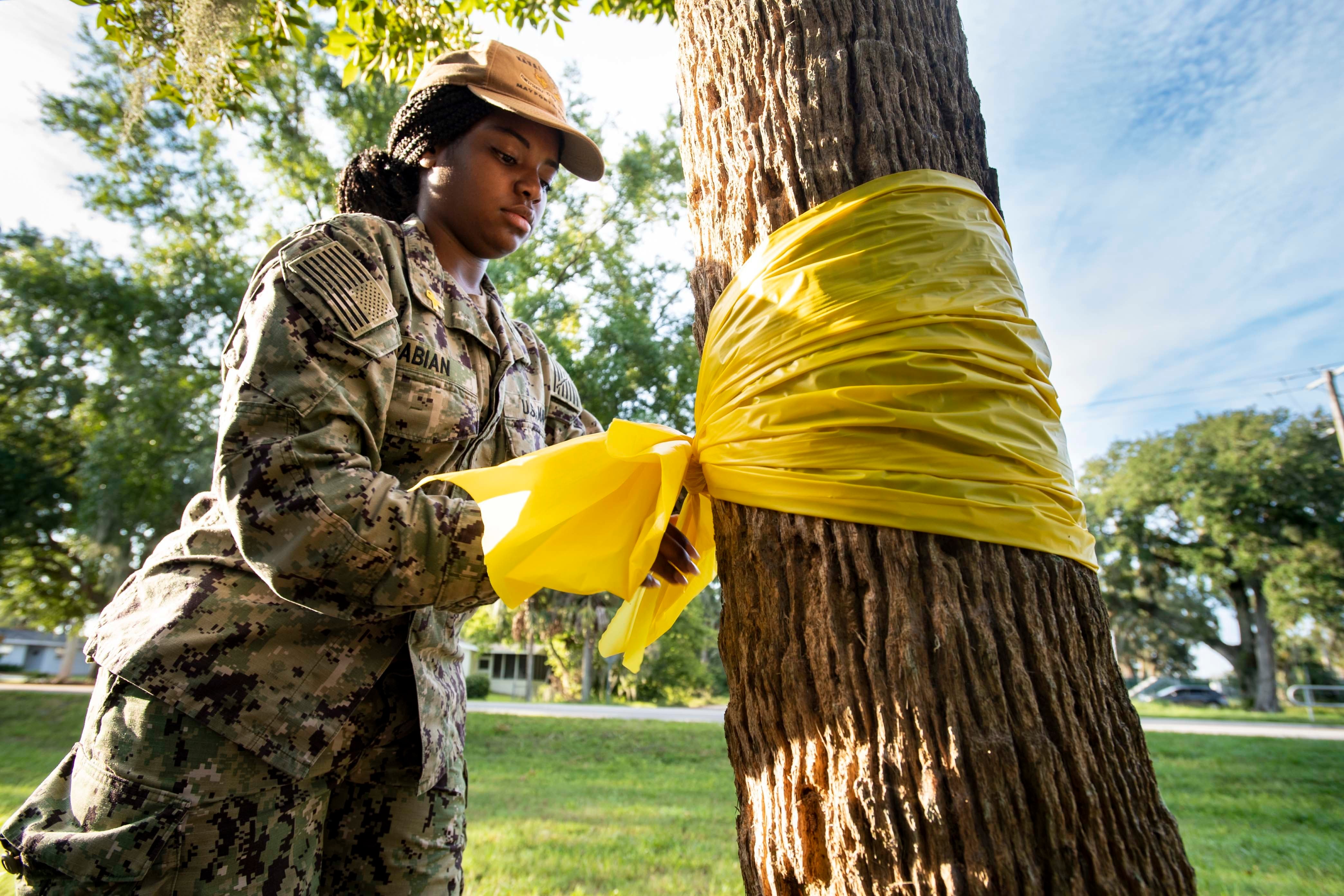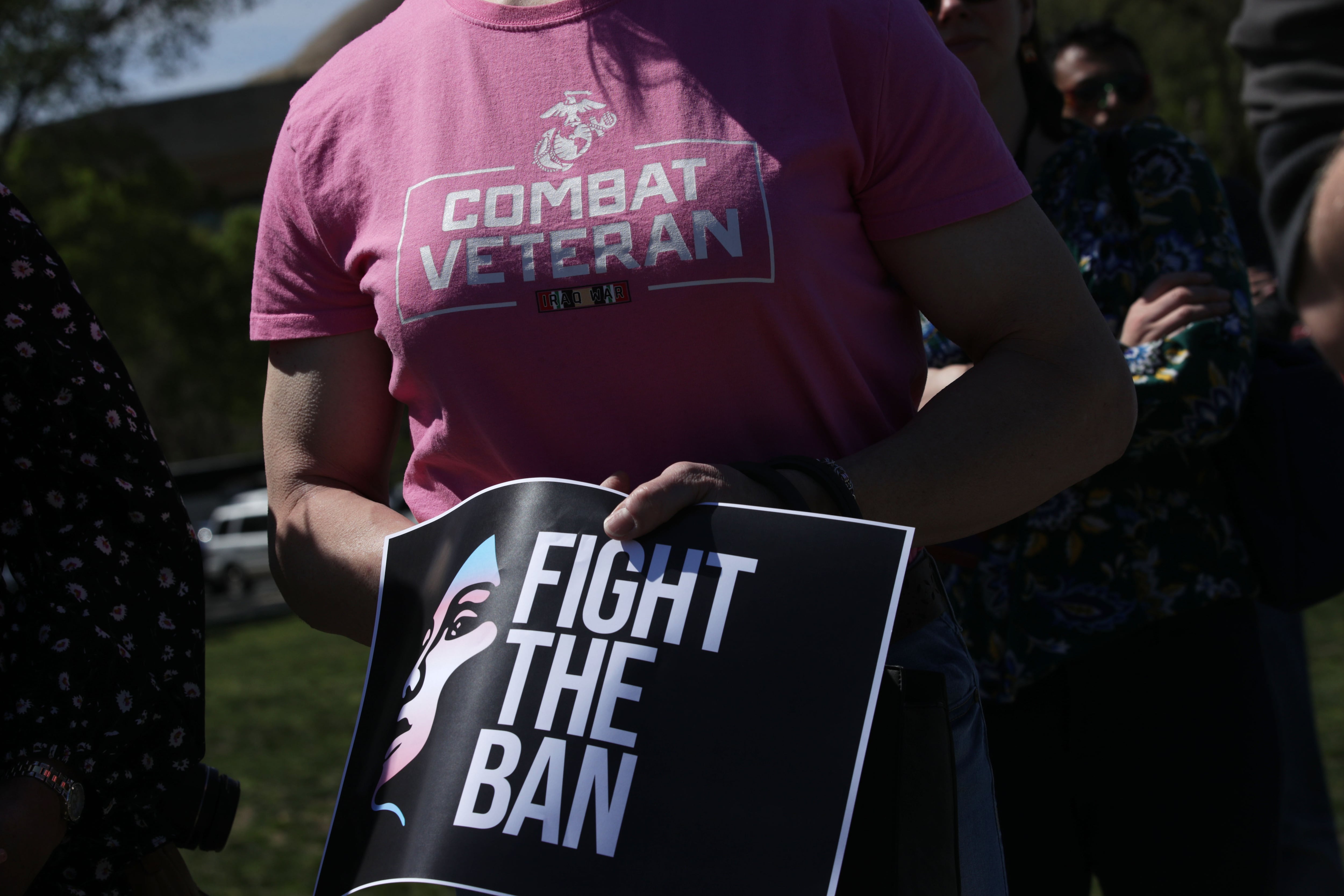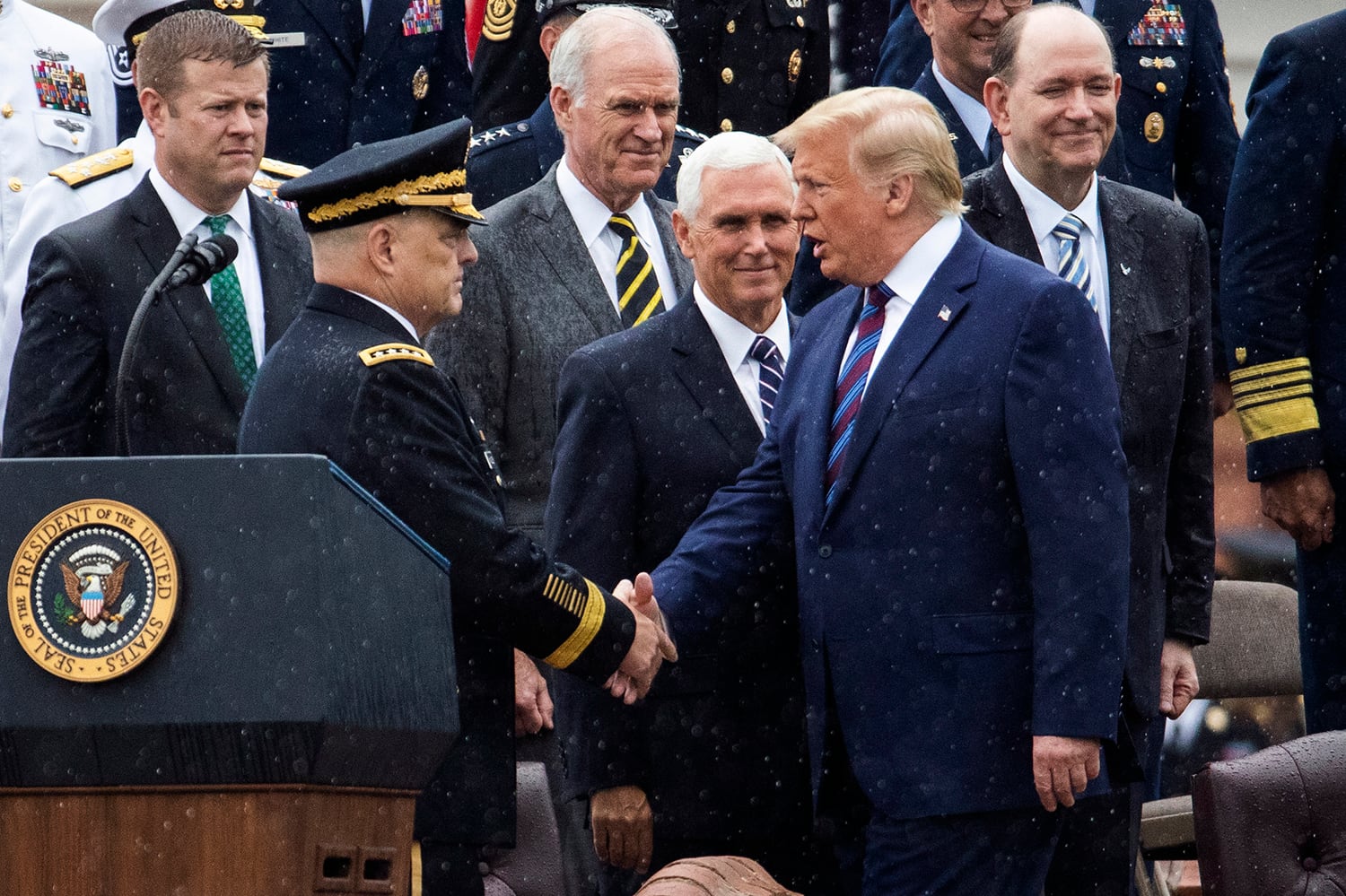In a year that stretched the limits of the human ability to handle stress and fear, the National Guard had a challenging set of variables to confront: How do we care for our people when our limited interactions are now, at best, virtual? What happens when you mobilize tens of thousands of troops to support the public when everyone else is staying home to avoid a deadly virus? And what does it do to a person to hold the line against a potentially violent protest and contemplate using force against your fellow Americans?
The effects of 2020′s months-long deployments to support pandemic relief and aid law enforcement in cities erupting in public demonstrations, as well as the U.S.-Mexico border mission and natural disaster relief the Guard already had on their plates, remain to be seen. But Guard leaders feel confident that, at least so far, the scars of 2020 aren’t reflected in the most stark way: their suicide numbers.
“I don’t think we saw any correlation last year with specific activations and increased risk for suicide,” Rear Adm. Matt Kleiman, an assistant U.S. surgeon general and NGB’s director of psychological health, told Military Times on Wednesday. “Time may tell, because I think a lot of times when you’re looking at suicide, you have to look sort of well beyond the event itself ― because someone may not be doing well this year, but it may not have manifested in a suicidal behavior.”
The National Guard reported 120 suicides in 2020, spokesman Wayne Hall told Military Times. It’s a 32-percent jump from 2019′s 90 ― a year that saw a precipitous drop from 136 in 2018 ― but relatively on par with the last half -decade. Because of that sharp up-and-down, it’s difficult to say whether either year was an anomaly, and it’ll take more years to establish a pattern.
Regardless, the Guard is trying to take steps in the right direction. A year ago, after taking responsibility of the National Guard Bureau, Army Gen. Dan Hokanson stood up an organizational suicide task force, to bring together all 54 states and jurisdictions and get their feedback on what they see in their culturally and geographically disparate units.
“We met twice a week for six months, we had 30 to 40 members regularly call into that meeting,” Kleiman said. “And then we develop those recommendations. And we broke out and into small groups to be able to really drill down.”
The task force includes leaders like state assistant adjutants general, Kleiman said.
“So it was not just the social workers and the psychologists making recommendations. It was really coming from the operational community, as well,” he said. “So I think when it comes to implementation, it’ll resonate better, knowing that those recommendations were actually developed by kind of this multidisciplinary group.”
That task force stood up soon after the Guard reported its 2019 suicide statistics, which showed a steep drop, but were couched by the fact that there was no one or two things to point to as contributing to the drop. And, in the midst of the pandemic, there were concerns that any progress might be undone.
“There was an emphasis on making sure that first-line leader was reaching out to that soldier to make sure everything was okay, or are they having problems?” Maj. Gen. Eric Little, NGB’s head of manpower and personnel, told Military Times. “Our family readiness programs were very active in reaching out to their family readiness groups to make sure they have everything they need ... which was very successful.”
There were two experiences for Guardsmen in 2020: Either you’re not drilling, or maybe doing it over a Zoom call, or you’re deploying to a high-stress mission.
Despite those long mobilizations, the Guard didn’t see a significant shift in its instances of suicides while activated versus while at home. Ninety-nine of the 120 suicides, or just over 82 percent, Hall said, occurred while in a non-duty status.
Researching deployment stress
Cognizant of the demand these deployments would have on their people, the Guard decided to do some research. They picked the New York National Guard as their population, both because the state was hit so hard in the early days of the pandemic, but also because many of their personnel were mobilized to help out.
“And we developed this survey to really get after the questions that we thought were going to be most relevant to helping us understand not only how COVID was impacting, or whether it was, but what were some of the lessons learned, and what are some of the things that we could take from that and actually improve our prevention efforts?” Kleiman said.
What they found is not altogether surprising. In units with support from leaders, there was lower stress and fewer days feeling unwell. The reverse was also true.
More specifically, 22 percent of those surveyed reported increased alcohol use, and those reporting high stress were twice as likely to be drinking more, and 75 percent more like to report worsening mental health.
They were also 75 percent more likely to seek mental health support, a promising sign that support efforts were successful.
RELATED

Finding answers
That research, as well as the regular sensing sessions and surveys that Guard organizations do in any given year, will feed into two initiatives they already have going.
One is called SPRINGboard, or Suicide Prevention and Readiness in the National Guard, a tool that gathers data on suicides and suicide prevention efforts, synthesizing it to help identify both risks factors as well as successful interventions.
“So maybe we need to realign resources. But we’re really digging in now on evaluating the programs that we have,” Little said. “Are they effective? Because we’re going to have to get down to ... where are we going to zero in on these resources and figure out what will make the biggest difference?”
The other is a suite of pilot programs, home grown by troops. There are 27 of them total, being tested in 34 states. A resource app in Utah, for example, has more than 2,000 downloads so far.
In New Mexico, their pilot focuses on adverse childhood experiences, and how those affect mental health long term.
“So what they do is they screen all new recruits, who are part of this pilot, around what kinds of adversity they faced before they even get to the National Guard,” Kleiman said. “And for those that screen into this program, they go into this sort of ... support program, so that they’re getting regular calls, are being checked in on ― there’s somebody who essentially follows them for the first year, to see how they’re doing.”
The pilot is so promising that it’s been expanded to South Dakota and Arkansas, Kleiman said.
“There’s a decreased the number of adverse outcomes that are coming out of those units that were part of that pilot,” he added.
Now, as the pilot program enters its third year, NGB will take a look at which ideas have the potential to become full-fledged programs.
“I really think you can screen our new recruits coming in and just see if they have those factors that we can try to catch,” Little said. “That’s why I’m really curious how this year goes with them.”
Meghann Myers is the Pentagon bureau chief at Military Times. She covers operations, policy, personnel, leadership and other issues affecting service members.





